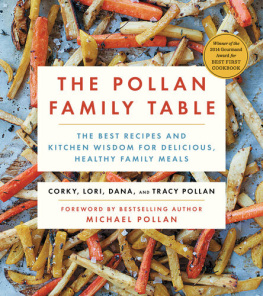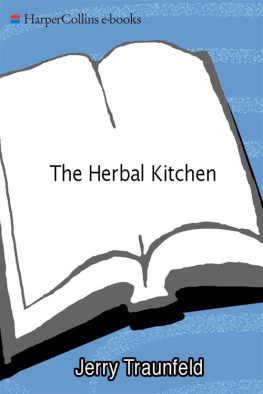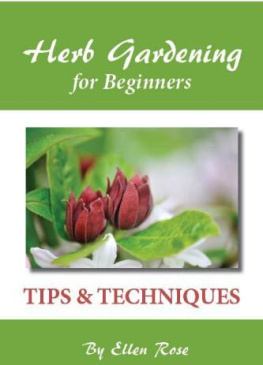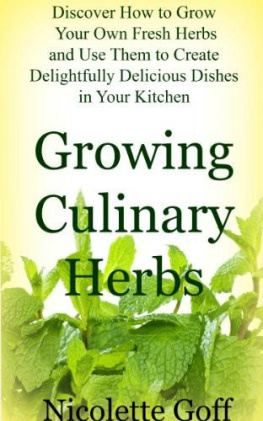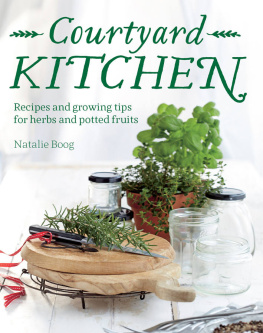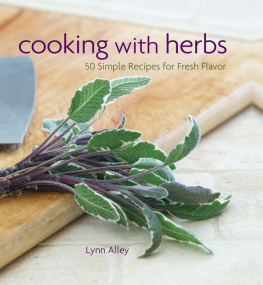Jerry Traunfeld - The Herbfarm Cookbook
Here you can read online Jerry Traunfeld - The Herbfarm Cookbook full text of the book (entire story) in english for free. Download pdf and epub, get meaning, cover and reviews about this ebook. year: 2013, publisher: Scribner, genre: Home and family. Description of the work, (preface) as well as reviews are available. Best literature library LitArk.com created for fans of good reading and offers a wide selection of genres:
Romance novel
Science fiction
Adventure
Detective
Science
History
Home and family
Prose
Art
Politics
Computer
Non-fiction
Religion
Business
Children
Humor
Choose a favorite category and find really read worthwhile books. Enjoy immersion in the world of imagination, feel the emotions of the characters or learn something new for yourself, make an fascinating discovery.
- Book:The Herbfarm Cookbook
- Author:
- Publisher:Scribner
- Genre:
- Year:2013
- Rating:3 / 5
- Favourites:Add to favourites
- Your mark:
The Herbfarm Cookbook: summary, description and annotation
We offer to read an annotation, description, summary or preface (depends on what the author of the book "The Herbfarm Cookbook" wrote himself). If you haven't found the necessary information about the book — write in the comments, we will try to find it.
Not so long ago, parsley was the only fresh herb available to most American cooks. Today, bunches of fresh oregano and rosemary can be found in nearly every supermarket, basil and mint grow abundantly in backyards from coast to coast, and garden centers offer pots of edible geraniums and lemon thyme. But once these herbs reach the kitchen, the inevitable question arises: Now what do I do with them? Here, at last, is the first truly comprehensive cookbook to cover all aspects of growing, handling, and cooking with fresh herbs.
Jerry Traunfeld grew up cooking and gardening in Maryland, but it wasnt until the 1980s, after he had graduated from the California Culinary Academy and was working at Jeremiah Towers Stars restaurant in San Francisco, that he began testing the amazing potential of herb cuisine. For the past decade, Jerry Traunfeld has been chef at The Herbfarm, an enchanted restaurant surrounded by kitchen gardens and tucked into the rainy foothills of the Cascade Mountains, east of Seattle. His brilliant nine-course herb-inspired menus have made reservations at the Herbfarm among the most coveted in the country.
Eager to reveal his magic to home cooks, Jerry Traunfeld shares 200 of his best recipes in The Herbfarm Cookbook. Written with passion, humor, and a caring for detail that makes this book quite special, The Herbfarm Cookbook explains everything from how to recognize the herbs in your supermarket to how to infuse a jar of honey with the flavor of fresh lavender. Recipes include a full range of dishes from soups, salads, eggs, pasta and risotto, vegetables, poultry, fish, meats, breads, and desserts to sauces, ice creams, sorbets, chutneys, vinegars, and candied flowers. On the familiar side are recipes for Bay Laurel Roasted Chicken and Roasted Asparagus Salad with Fried Sage explained with the type of detail that insures the chicken will be moist and suffused with the flavor of bay and the asparagus complemented with the delicate crunch of sage. On the novel side you will find such unusual dishes as Oysters on the Half Shell with Lemon Varbana Ice and Rhubarb and Angelica Pie.
A treasure trove of information, The Herbfarm Cookbook contains a glossary of 27 of the most common culinary herbs and edible flowers; a definitive guide to growing herbs in a garden, a city lot, or on a windowsill; a listing of the USDA has hardiness zones; how to harvest, clean, and store fresh herbs; a Growing Requirements Chart, including each herbs life cycle, height, pruning and growing needs, and number of plants to grow for an average kitchen; and a Cooking with Fresh Herbs Chart, with parts of the herb used, flavor characteristics, amount of chopped herb for six servings, and best herbal partners.
The Herbfarm Cookbook is the most complete, inspired, and useful book about cooking with herbs ever written.
* 8 pages of finished dishes in full color
* 16 full-page botanical watercolors in full color
Jerry Traunfeld: author's other books
Who wrote The Herbfarm Cookbook? Find out the surname, the name of the author of the book and a list of all author's works by series.

